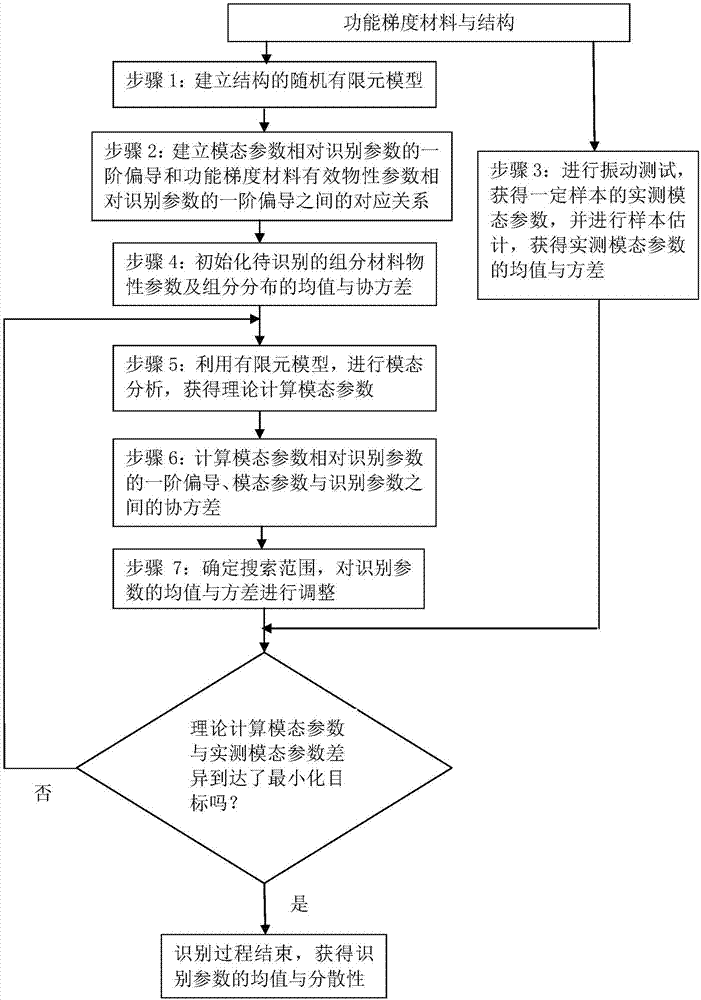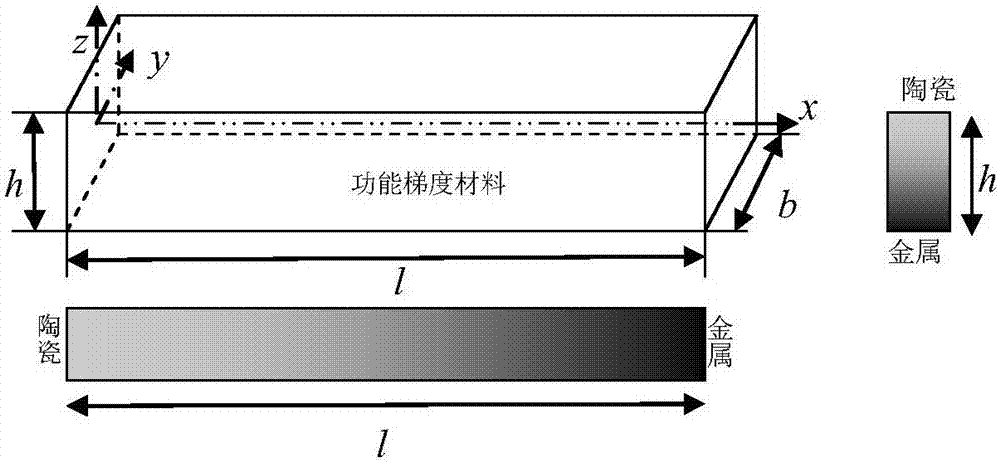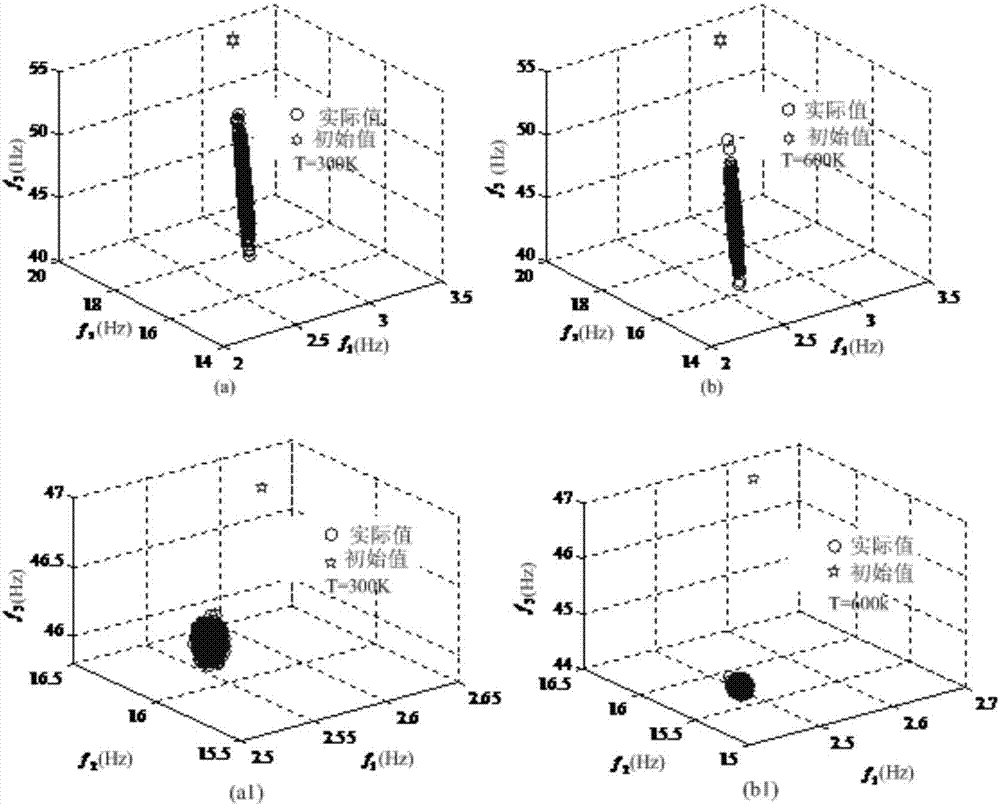Functionally gradient material and structure parameter statistics recognition method
A functionally graded material and functionally graded technology, applied in the field of statistical identification of parameters of heterogeneous materials and structures, can solve problems affecting recognition speed, random propagation errors, and unsuccessful recognition
- Summary
- Abstract
- Description
- Claims
- Application Information
AI Technical Summary
Problems solved by technology
Method used
Image
Examples
Embodiment Construction
[0066] In order to make the object, technical solution and advantages of the present invention more clear, the present invention will be further described in detail below in conjunction with the accompanying drawings and embodiments. It should be understood that the specific embodiments described here are only used to explain the present invention, not to limit the present invention.
[0067] Such as figure 1 As shown, a method for parameter statistical identification of functionally graded materials and structures includes the following steps:
[0068] Step 1: Establish a finite element model of the functionally graded structure, and use the first-order perturbation method to obtain a stochastic finite element model of the functionally graded structure;
[0069] Step 2: On the basis of the stochastic finite element model, using the orthogonality of mode shapes and the first-order perturbation method, establish the first-order partial derivatives of functionally graded struc...
PUM
 Login to View More
Login to View More Abstract
Description
Claims
Application Information
 Login to View More
Login to View More - R&D
- Intellectual Property
- Life Sciences
- Materials
- Tech Scout
- Unparalleled Data Quality
- Higher Quality Content
- 60% Fewer Hallucinations
Browse by: Latest US Patents, China's latest patents, Technical Efficacy Thesaurus, Application Domain, Technology Topic, Popular Technical Reports.
© 2025 PatSnap. All rights reserved.Legal|Privacy policy|Modern Slavery Act Transparency Statement|Sitemap|About US| Contact US: help@patsnap.com



